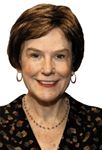Pediatricians and schools: Partners for children
If the overall goal for pediatricians is to ensure that, to the greatest extent possible, children grow to adulthood healthy in mind and body and prepared to become productive members of society, then we need a great deal of help to achieve that goal.

The articles in this issue address just a few of the many ways in which schools, including teachers, counselors, nurses, and other school personnel, are critical partners for pediatricians. Frances Page Glascoe, PhD, and S Sutton Hamilton, MD, describe methods for screening school-aged children to detect learning difficulties and psychosocial problems that may compromise success. They make it clear that neither the formal diagnosis and treatment of learning disabilities nor the identification and treatment of many mental health problems are within the scope of pediatric practice. To address those issues, help is needed from schools and from other professionals.
Another article in this issue describes the role that schools can play in enhancing the health of the community as advocates for immunizations. State laws have been an important mechanism for ensuring that children receive recommended immunizations by the time of school entry; the article by Karlen E Luthy and colleagues emphasizes that schools and other community organizations can be valuable partners in encouraging timely immunization during preschool years and in dispelling some of the concerns parents may have about the risks of immunization.
Pediatricians and schools have shared goals for children and for child health. Partnership has often been cumbersome to achieve, and in the past, there has sometimes been reluctance on both sides. It is critical that we nurture that partnership in the interest of our shared goal.
Dr McMillan Editor-in-Chief Contemporary Pediatrics